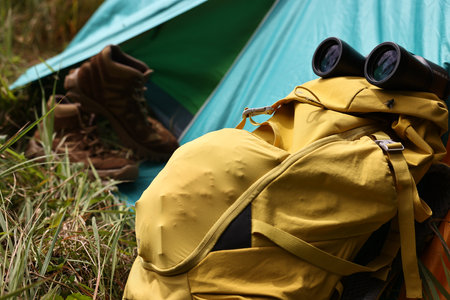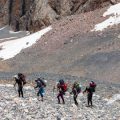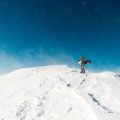1. Understanding Water Sources on U.S. Trails
When you’re hiking or backpacking in the United States, finding clean drinking water is a top priority. The American backcountry offers a variety of water sources, each with its own set of challenges and potential contaminants. Let’s break down the common types of water sources you’ll encounter on U.S. trails, and what you need to watch out for before filling up your bottle.
Common Water Sources in the American Backcountry
| Water Source | Description | Typical Locations |
|---|---|---|
| Streams & Creeks | Flowing water, usually from rainfall or melting snow; often clear but can be fast-moving during spring. | Mountain valleys, forested areas, along hiking trails |
| Lakes & Ponds | Larger bodies of still water; may look calm and inviting but can contain more debris or algae. | High alpine basins, national parks, lowland forests |
| Springs | Water emerging from underground; often cold and sometimes considered cleaner than surface water. | Foothills, mountain slopes, near rock outcrops |
| Snowmelt | Water from melting snow; generally safe if fresh, but can pick up contaminants as it flows downhill. | High elevations, early summer trails, alpine regions |
Typical Contaminants Found on U.S. Trails
No matter how clear a stream or lake looks, it could still be home to microscopic hazards. Here are some of the main threats hikers face when collecting water in the wild:
| Contaminant Type | Description | Potential Health Risk | Commonly Found In |
|---|---|---|---|
| Bacteria (e.g., E. coli) | Tiny organisms from animal waste or human activity. | Stomach cramps, diarrhea, nausea | Streams near campsites, lakes with wildlife access |
| Protozoa (e.g., Giardia, Cryptosporidium) | Parasites that survive traditional chlorine treatment. | Severe gastrointestinal illness (“beaver fever”) | Lakes, ponds, slow-moving creeks |
| Viruses (e.g., Norovirus) | Tinier than bacteria and protozoa; spread by contaminated waste. | Nausea, vomiting, diarrhea; more common in high-use areas | Crowded campsites, heavily trafficked backcountry zones |
| Chemicals & Heavy Metals | Pesticides from farmland runoff or mining residue. | Long-term health risks if consumed regularly | Lakes/streams downstream from agricultural or mining sites |
| Sediment & Debris | Dirt, sand, leaves; makes water cloudy but not always dangerous. | Mainly affects taste and appearance; sometimes harbors other contaminants | Muddy streams after rainstorms or snowmelt season |
Key Takeaway: Always Purify!
No matter where you hike—from the Appalachian Trail to the Rockies—assume all natural water is contaminated unless treated. Knowing what’s in your water helps you choose the right purification method for your next adventure in the great American outdoors.
2. Key Considerations for Water Purification
When you’re hitting the trails across the U.S., choosing the right water purification method can make or break your outdoor experience. Here’s a breakdown of what to keep in mind so you stay healthy and hydrated wherever your adventure takes you.
Pathogens Present in U.S. Waters
Not all water sources are created equal. In the United States, the most common threats found in backcountry water include bacteria (like E. coli), protozoa (such as Giardia and Cryptosporidium), and sometimes viruses (mainly near heavily trafficked sites or livestock areas). Knowing what you’re up against helps you pick a method that targets those specific nasties.
Common Pathogens and Recommended Treatments
| Pathogen Type | Common Locations | Effective Purification Methods |
|---|---|---|
| Bacteria | Lakes, streams, rivers nationwide | Filters, chemical treatments, UV light, boiling |
| Protozoa | Lakes, mountain streams, stagnant water | Filters (0.2 micron or less), UV light, boiling |
| Viruses | Heavily used campsites, downstream of farms | Chemical treatments, UV light, boiling (filters alone may not remove viruses) |
Ease of Use on the Trail
Your water treatment choice should match your comfort level and trail conditions. Some hikers love the simplicity of pump filters, while others prefer the no-fuss drop-and-wait style of chemical tablets. UV pens offer fast results but require batteries and clear water.
Filter Weight and Packability
If you’re thru-hiking or backpacking long distances, every ounce counts. Compare the weight and size of different options before heading out:
| Purification Method | Average Weight (oz) | Packing Size |
|---|---|---|
| Pump Filter | 10–20 oz | Larger; needs space in pack |
| Squeeze Filter/Straw | 2–5 oz | Very compact; fits in pockets or side pouches |
| Chemical Tablets/Drops | <1 oz (for 30+ treatments) | Tiny; easy to stash anywhere |
| UV Pen/Device | 4–8 oz (plus batteries) | Slim; requires battery storage too |
| Boiling Water Gear (Stove & Fuel) | Varies widely (8–16 oz+) | Larger due to stove/fuel bottle size |
Treatment Speed: How Fast Do You Need Clean Water?
If you want to hydrate quickly during a hot summer hike, speed matters! Pump filters and squeeze systems can deliver immediate results, while chemical treatments might take 30 minutes or more to work. Boiling is reliable but time-consuming—especially at higher altitudes.
Environmental Impact on U.S. Trails
The Leave No Trace philosophy is huge in American outdoor culture. When picking a purification method, consider its impact: disposable filter cartridges and single-use chemicals create waste, while boiling requires fuel that leaves a bigger footprint. Filters with replaceable parts or UV pens with rechargeable batteries are better for minimizing trash along America’s beautiful trails.
![]()
3. Popular Purification Methods and Their Pros & Cons
Common Water Purification Options for U.S. Trails
When you’re hitting the trails across America—from the Pacific Crest Trail to the Appalachian Trail—making sure your water is safe to drink is a must. Different environments and water sources call for different purification strategies. Here’s a look at the four most popular methods: filters, chemical treatments, UV light devices, and boiling. Each comes with its own set of strengths and challenges that are worth considering before you head out.
Quick Comparison Table
| Method | How It Works | Main Pros | Main Cons |
|---|---|---|---|
| Filters (Pump, Squeeze, Straw) | Physically removes bacteria, protozoa, and some debris using a filter element | Immediate drinking; improves taste; easy to use; lightweight options available | Can clog with silt; may not remove viruses; parts can break or wear out |
| Chemical Treatments (Iodine, Chlorine Dioxide) | Kills bacteria, viruses, and some protozoa by chemical reaction | Lightweight; affordable; effective against most pathogens including viruses | Takes 30 min–4 hours to work; leaves taste/odor; less effective on murky water |
| UV Light Devices (e.g., SteriPEN) | Destroys DNA of bacteria, viruses, and protozoa with ultraviolet light | Fast (about 90 seconds); no chemical taste; small and easy to pack | Needs batteries/power; only works in clear water; device can malfunction or break |
| Boiling Water | Kills all pathogens by heating water to a rolling boil for at least 1 minute (longer at elevation) | No equipment needed besides a stove/pot; reliable if done correctly | Time-consuming; fuel-intensive; requires carrying stove and fuel; doesn’t remove debris/taste |
Real-World Trail Considerations
Filters: The Go-To for Many Hikers
Filters are hugely popular on U.S. trails because they’re straightforward and provide instant results. Brands like Sawyer Squeeze or Katadyn BeFree are trail favorites for their compact size and ease of use. However, if you’re trekking in areas where viruses might be present (like near agricultural runoff or downstream from campsites), you’ll need an additional step since most filters don’t catch viruses.
Chemical Treatments: Lightweight and Reliable Backup
Chemicals like Aquamira drops or iodine tablets are ultralight and make a great backup in your kit. They shine when traveling light or as a secondary method if your filter fails. Keep in mind the wait time—sometimes up to four hours for full effectiveness—and that some people dislike the taste left behind.
UV Light Devices: Fast but Finicky
SteriPENs and similar UV gadgets are loved for how quickly they treat water (usually under two minutes per bottle). They work great if you’re traveling solo or need to treat small amounts of clear water. Just remember that electronics can fail, so always carry spare batteries or have a backup plan.
Boiling: Old-School But Reliable
If you’re camping overnight or preparing hot meals anyway, boiling is a time-tested option. It’s especially useful when treating large batches of water or dealing with questionable sources. The downside? You’ll need extra fuel and patience—plus it won’t help with floating bits or funky flavors.
4. Recommended Purification Setups for American Trails
Picking the right water purification setup can make or break your hiking experience in the U.S. With so many trail types, distances, and group sizes, it’s smart to match your gear to your specific adventure. Here are some tried-and-true gear combinations that seasoned hikers in America rely on.
Popular Water Purification Systems
| Trail Type/Condition | Distance | Group Size | Recommended Setup | Why It Works |
|---|---|---|---|---|
| Well-Marked National Parks (e.g., Yosemite, Grand Canyon) | Day Hikes (1–10 miles) | Solo or Pair | Squeeze filter (Sawyer Squeeze) + backup chlorine dioxide tablets | Lightweight, fast, easy to use at clear sources; tablets as emergency backup |
| Backcountry Trails (Appalachian Trail, PCT) | Multi-Day (10+ miles/day) | Solo to Small Group (1–4) | Pump filter (MSR MiniWorks) + gravity system (Platypus GravityWorks) | Pump for muddy water, gravity system for camp convenience; both handle larger volumes efficiently |
| Desert/Remote Southwest (Arizona Trail, Utah canyons) | Any length, scarce water sources | Solo or Pair | Steripen UV purifier + prefilter bottle (Grayl GeoPress) | Steripen is quick for clear water; Grayl prefilters sediment and neutralizes taste from questionable sources |
| Larger Groups or Family Hikes | Any distance | 5+ | Gravity filter system (Katadyn Base Camp Pro) + chemical drops as backup | Covers lots of water quickly; chemicals serve as a lightweight emergency solution for unexpected needs |
| Emergency/Ultralight Backpacking | Short trips or as a backup method | Any size | Chemical tablets/drops (Aquamira) only | Tiny pack size and weight; reliable if used correctly—best as a secondary solution rather than primary method |
What Experienced U.S. Hikers Prefer
Pump Filters & Squeeze Filters
Pump filters like the MSR MiniWorks or Katadyn Hiker Pro: These are favorites when water is dirty or hard to reach. Many Appalachian Trail thru-hikers use pump filters because they work well in silty streams and puddles.
Squeeze filters such as the Sawyer Squeeze: Hugely popular on both the Pacific Crest Trail and shorter day hikes. They’re lightweight, easy to backflush on the go, and compatible with standard water bottles.
Steripen UV Systems & Chemical Treatments
Steripen Adventurer Opti: Loved by solo hikers for its speed—purifies one liter in 90 seconds—but requires clear water and working batteries. Often paired with a basic prefilter bottle to remove debris.
Chemical treatments like Aquamira: A staple backup option for ultralight backpackers. Tablets or drops are nearly weightless and ensure you’ll have clean water if your main system fails.
Gravity Filtration Systems for Groups & Campsites
If you’re camping with friends or family, gravity filters like the Platypus GravityWorks shine. Fill the bag, hang it up, and let gravity do the work while you set up camp or cook dinner. They’re efficient for groups but bulkier than squeeze filters or Steripens.
A Quick Comparison Table: Pros & Cons of Popular Methods
| Purification Method | Main Advantages | Main Drawbacks |
|---|---|---|
| Pump Filter | Cleans muddy/silty water; durable; reliable in all conditions | Bigger/heavier; takes effort to pump each bottle/liter |
| Squeeze Filter | Lightweight; fast; minimal moving parts | Easily clogged by sediment; not ideal for large groups |
| Steripen UV | Super fast on clear water; lightweight | Ineffective in cloudy/murky water; needs batteries |
| Chemical Tablets/Drops | Tiny size/weight; works on viruses too | Taste; wait time (30 min+); not good for very dirty water |
| Gravity System | No pumping needed; great for groups/campsites | Larger packed size; not ideal for quick stops on the trail |
No matter which setup you choose, always carry a backup method just in case—and make sure you’re familiar with how your gear works before hitting the trail!
5. Safety Tips and Leave No Trace Principles
When youre hiking the diverse trails of the U.S., choosing the right water purification method is just part of staying safe and protecting nature. Here are some practical tips to help you keep yourself healthy and preserve America’s wild places, following Leave No Trace principles.
Water Safety Best Practices
| Best Practice | Why It Matters |
|---|---|
| Always Purify Water | Even clear, flowing streams can carry harmful pathogens; always use your selected purification method before drinking. |
| Collect Water Upstream | Gather water from upstream sources, away from campsites and trails, to minimize contamination risks. |
| Use Clean Containers | Avoid using dirty bottles or cups that could reintroduce germs into your purified water. |
| Wash Hands Before Handling Water Gear | Dirty hands can transfer bacteria back into clean containers or treated water. |
| Store Treated Water Separately | Keep treated and untreated water separate to avoid cross-contamination on the trail. |
Leave No Trace Water Ethics
- Avoid Polluting Water Sources: Never wash dishes, clothes, or yourself directly in lakes or streams. Carry water at least 200 feet away before cleaning up or bathing.
- Packing Out Waste: Always pack out trash, leftover food, and used filters or cartridges. Do not leave any gear behind—“pack it in, pack it out.”
- Minimize Chemical Use: If you use chemical purifiers (like iodine or chlorine), use only what’s needed and avoid spilling chemicals directly into water sources.
- Respect Local Regulations: Some parks have specific rules about water collection and treatment—check for posted signs or ranger advice.
- Wildlife Consideration: Don’t disturb animals while collecting water, and never leave food scraps near water sources.
Quick Reference: Leave No Trace & Water Purification on U.S. Trails
| Do | Dont |
|---|---|
| Treat all collected water before drinking Follow local guidelines Pack out used filters/chemical wrappers Move 200 ft from water to wash or cook Educate others about safe practices |
Bathe or wash dishes in streams/lakes Leave trash or gear behind Use excessive chemicals Disturb wildlife near water Assume all natural water is safe untreated |
Remember:
Your choices on the trail affect not just your health, but also the experience of future hikers. By combining smart purification habits with Leave No Trace ethics, you help protect America’s wild waters for everyone to enjoy.


